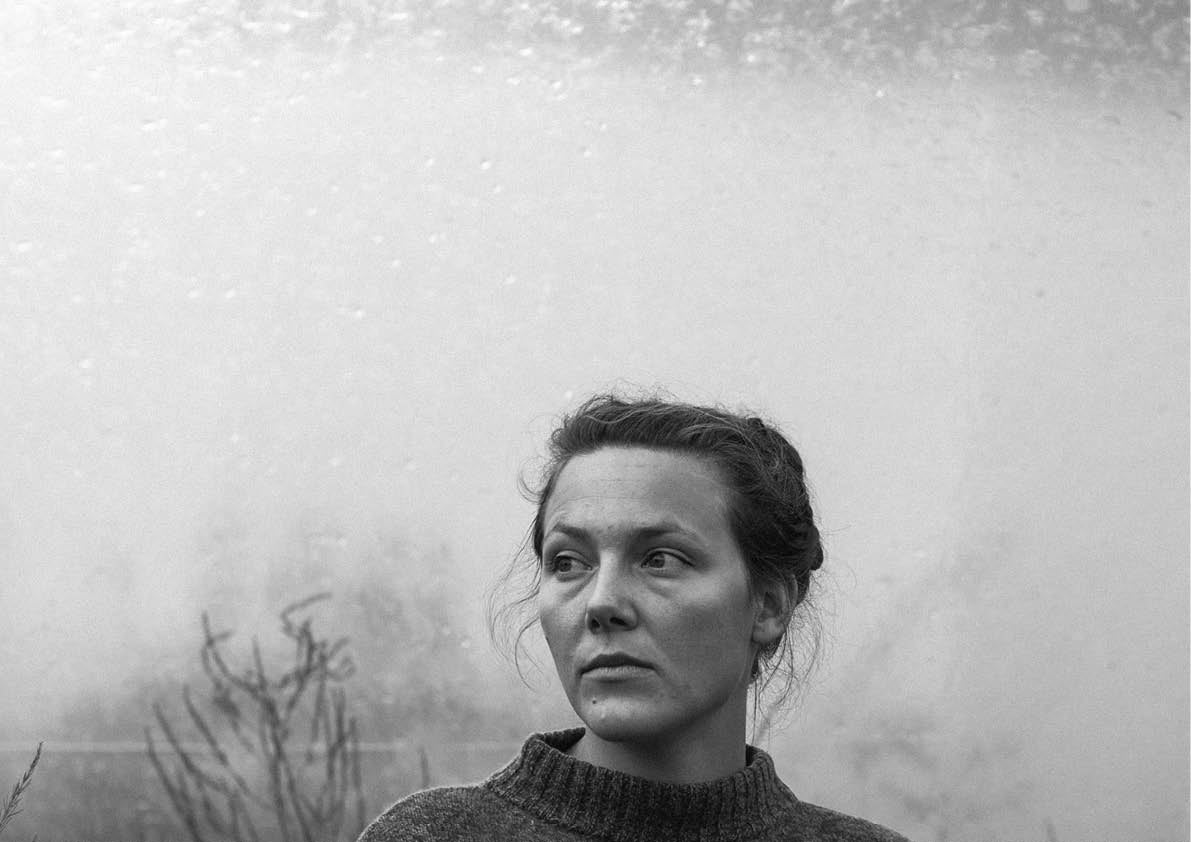
For the series TOAST Portraits journalist Mina Holland and photographer Elena Heatherwick meet the people whose treasured TOAST pieces some archive, some new have stood the test of time. First up was Katy Brett, then Genevieve Dutton, Dawn Worsley and Kat Bazeley, now we meet Meg Brooks.
Meg Brooks collects rocks. They live on her windowsill, alongside fold-up penknives, a beeswax candle and drying flowers picked from the herb bed outside. "They all have a character," she says, explaining that she had started to pick up stones which reminded her of Henry Moore's abstract body sculptures, with their soft contours and vague hints of human form, and that this habit had gathered momentum and become a collection. "It wasn't until after I'd begun bringing them home that I found out Moore himself collected stones and that they inspired his sculptures."

The windowsill that the rocks are lining is elegantly makeshift, in fact the whole building is, an old tractor shed that sits in a field on the edge of Dartmoor. Artist Meg and her partner Marco, a photographer, have put the place together themselves, using found and used items. The basic frame is constructed from three pieces of corrugated tin fastened together by a ratchet and they have a parquet floor salvaged from an old council building.

By chance, we visit on the anniversary of their return to the south-west - three years to the day. The place feels at once sparse and abundant, kitted out only with what Meg and Marco need, yet somehow plentiful, too. There is a stack of jars full of blackcurrant jam made with this year's glut, supermarket bags filled with ripe plums they have picked for us to take home, and a giant bowl of tomato orzo and feta, which we plough through over the course of an afternoon.

They overlook polytunnels in which a cycle of organic leaves come and go each year: golden streak, oak leaves, American land cress, gems. Walking through one, Meg points out emerald swathes of parsley, bulges of muddy beetroot, and the vestiges of this year's runner beans that hang from the curved ceilings like skeletons. Another tunnel is filled right up to its ceiling with asparagus plants, which, once the year's spears have departed, grow into green shrubs that resemble Christmas trees.

Beside snoozing cats and with cups of tea, we talk about Meg's work. Her hair is pulled away from her face in a bun, with loose downy strands curling like smoke around its harder lines. She wears a mottled pink and raspberry knit jumper, bought from Toast a few years ago, and a recent pair of black workwear trousers. She might buy one or two things from Toast each year she says, the comfortable styles as suited to drawing and painting inside as they are to farm work and she likes the colours.


Speaking of which, there seems to be an accidental theme to today's hues, Meg's jumper coordinating with the colour scheme of some of the work she shows us. She and Marco have been collaborating on a project of photographs, drawings and words about their polytunnels, and in response to Marco's pictures, Meg has made coloured pencil studies of their shapes and contents. In berry and peach tones, Meg's drawings offer another beautiful perspective on these otherwise functional structures, although I find myself rapt by her copy too, like a vast cocoon, the polytunnel sustains a fertile gut, a polyethylene skin stretched tight over bowed ribs.

She clearly likes words, and tells me that as a child she would fantasise about having a library in the most remote place in the world, one which no one else could visit. If ever she ran out of books, someone would air drop a big load down. Sometimes, she says, she'll get stuck on certain words, which then race around her brain almost maddeningly. At the moment it's turret' and buzzard', she says, but a few years ago it was do', and for a while I couldn't use it, couldn't think how it was responsible for all those actions.
As she talks, I notice the grace of Meg's hands, which offer emphasis and a kind of kinetic support to whatever she is saying. Somehow, they keep moving, yet seem so very still, frozen in my memory. It's only later that I realise what they remind me of the many hand studies drawn by none other than Henry Moore.
Add a comment